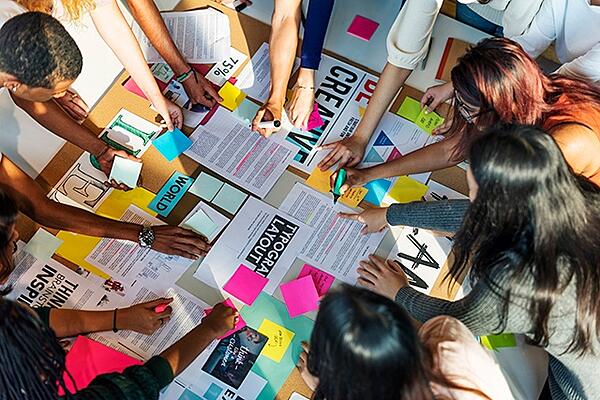It’s about a 3 min. read.

It’s a daunting reality for today’s executives: consumers can provide feedback with the tap of a finger. Just ask United Airlines about the havoc social media can wreak. On the flip side, this empowerment is also a tremendous opportunity for innovators.
I believe we’re lucky to be innovating at a time when it’s so easy for customers to give us their ideas and feedback. Collaborating with customers at the front end of innovation is critical to building truly customer-centric products and services, making the most of your innovation dollars, and mitigating the risk of a public backlash or loss of brand trust and equity.
What starts at the front end can move through an agile process of ideation and development, one that integrates the customer through roll-out, communications, measurement and optimization.
At CMB, we help clients innovate through a Design Thinking framework—including the customer in all phases: Empathize/Define/Ideate/Prototype/Test. As Jeff Immelt, former Chairman and CEO of General Electric, urged the crowd of engineers and designers at last week’s Front End of Innovation Conference (FEI), it’s critical to “accelerate customers through the business model”.
As CMB’s VP of Strategy + Innovation, it was gratifying to hear that at FEI, “customer” wasn’t just a buzzword. In fact, there was an entire track devoted to “Customer Driven Innovation.” In another keynote address, Dr. Peter Koen of the Stevens Institute of Technology, lectured on the incremental innovation that often comes from internal-only ideation—“disruptive innovation comes from users, not corporations.” Consistent with that, manufacturing giant 3M has found its user-generated products are eight times more profitable than products generated internally.
Here’s how we incorporate Agile and Design Thinking to include customers at every phase:
Some organizations are more open to the principles of Design Thinking than others. So how can you prepare your organization for this? Encourage an environment grounded in collaboration, where failure is expected (not just accepted) and humility is rewarded. Design Thinking is more than a process—it’s a mindset.
Contact us to learn how to tackle innovation with your customers.